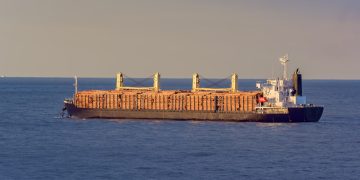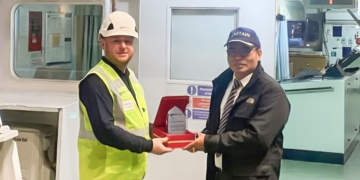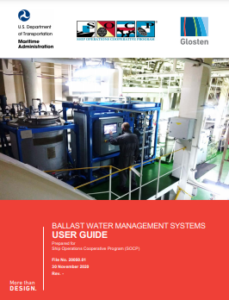The Ship Operations Cooperative Program (SOCP) published a Ballast Water Management Systems User Guide to provide step-by-step methods for integrating and operating a compliant BWMS.
In fact, the guide focuses on ballast water management for U.S. flag operators in both domestic and international trade.
The membership of SOCP should be extremely excited for the release of this Ballast Water Management Systems User Guide as we believe it is a great tool and will enhance awareness for all maritime operators.
…said SOCP President Jayson Toth.
According to the guide, all aspects of the BWMS life cycle are covered in three parts:
- Part A – Planning, installation, and commissioning
- Part B – Maintaining compliance, monitoring, and enforcement
- Part C – Training, equipment maintenance, and repair
Among others, SOCP provides guidance on how to apply the BWM Regulations to your vessel, by answering the above questions.
Does vessel take water on board as ballast?
NO: Vessel is not subject to BWM regulations. If the vessel does not take water onboard as ballast (and therefore does not have ballast tanks, as defined in the Code of Federal Regulations), BWM regulations do not apply.
YES: Vessel is subject to BWM regulations. If the vessel takes water onboard as ballast, regardless of its origin or intended discharge location, BWM regulations apply.
USCG (for vessels operating in US waters): Is vessel exempt from ballast water management?
YES: Not required to comply with BWM requirements. If the vessel qualifies as exempt, as detailed in Section 1.2, then BWM requirements for ballast carried onboard do not apply. Reporting and recordkeeping requirements may still apply.
– Eligible for extension: Submit application for extension at least 12 months before compliance date. Extensions are increasingly difficult to obtain, and the USCG now requires rigorous documentation that a compliant ballast water management system (BWMS) installation is not possible. Justifications for extension are detailed in Section 1.3.
NO: Install USCG type-approved BWMS by next scheduled drydock. Details on Type Approval (TA) applicability are detailed in Section 2.1. Compliance alternatives include exclusive use of water from a US Public Water System (i.e. land-based municipal water), discharge of all ballast water to a shoreside facility, or installing a prototype BWMS under USCG Shipboard Technology.
IMO: Does vessel operate in waters under foreign jurisdiction?
NO: No additional BWMS compliance is required if vessel does not operate in waters under foreign jurisdiction.
YES: Install an IMO Type-approved BWMS by next International Oil Pollution Prevention (IOPP) certificate renewal. BWMSs must be approved by a flag administration that is a member state of IMO. Generally, BWMSs with USCG TA also have IMO TA.
US Regional and State requirements:
- US regional and state requirements for BWM are in addition to USCG requirements and may require additional planning for uptake and discharge of ballast water. Regional and state requirements include ballast water exchange plus ballast water treatment (BWE + BWT), disinfection by-products, and additional reporting. These are detailed in Section 1.6.
- Foreign regional and state requirements are not widely adopted but may apply in some sovereign or local waters. Vessels on international voyages should review ballast discharge requirements for new arrival locations and verify with local authorities.
Explore the guide herebelow
































































